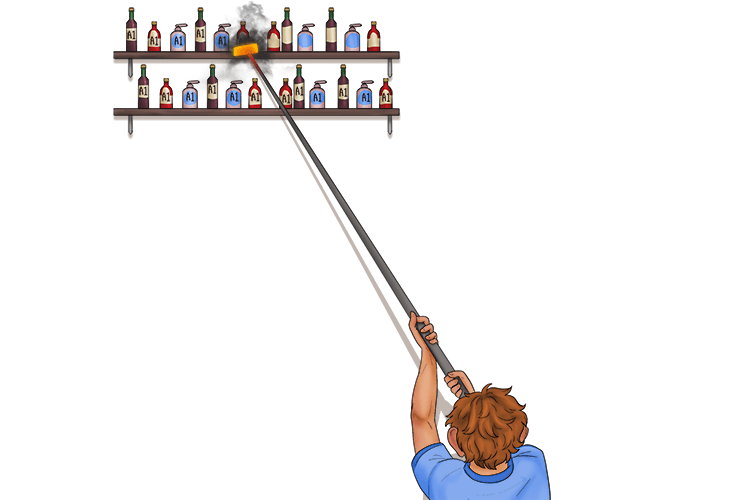Brand Extension – When a company uses one of its established brand names on a new product or product category
To remember what brand extension means use the following mnemonic:
The branding stamp needed an extension (brand extension) so all the new products could be reached and branded.

A brand extension is a marketing strategy in which a company uses an existing brand name to launch a new product or service in a different product category. For example, a company has a successful brand called A1 ketchup and they decide to then launch a product called A1 salad cream. This can be a risky strategy, but it can be profitable for a company. There are two main types of brand extensions, line extensions and category extensions.
Line extensions involve adding new products to an existing product category. For example, a company that sells toothpaste, perhaps called Amazing Toothpaste, might launch a new toothpaste for sensitive teeth called Amazing Sensitive Toothpaste.
Category extensions involve expanding into a new product category altogether. For example, the same company that sells toothpaste might launch a line of deodorant called Amazing Deodorant.
There are several reasons why companies might choose to use brand extensions. One reason is to capitalise on the awareness of the existing brand name. If a brand is well-known and respected, it can give customers a sense of familiarity and trust with the new product. This can make it easier for the new product to succeed.
Another reason for brand extensions is to increase brand awareness. When a company launches a new product under an existing brand name, it can help to increase awareness of the overall brand. This can be especially helpful if the new product is in a different product category from the existing products.
Finally, a brand extension can be a way to expand into new markets. If a company has a strong brand in one market it can use that brand to launch new products in other markets. This can help the company to grow its business and reach new customers.
An example of a successful brand extension is almost the entire product line-up offered by the technology company Apple. After beginning as a company just making personal computers, Apple extended its brand into MP3 players, phones, headphones and speakers with very high levels of success.
Another successful example is Michelin. Primarily a tyre manufacturer, Michelin had an idea to get more people driving and therefore using their tyres. They came up with a series of guides which rank the quality of hotels and restaurants. Millions of these guides have been sold throughout the years and hold an incredibly high level of importance within the culinary industry.
However, not all brand extensions are successful. Amazon’s Fire Phone was launched to break into the budget smartphone market. This market was very difficult to penetrate, however, with a high number of established competitors in place. Despite their market dominance in many areas, Amazon was forced to discontinue the Fire Phone just a year after it debuted due to low sales.
Brand extensions can weaken the initial successful product if not done correctly. If a single product line is extended even once, it can be the case that the overall sales of the range fall. An initial increase in sales may be seen, but in the long term, the sales can fall below that which could have been achieved if only the original product was available.
An example of this is the carbonated beverage brand Tango. In the UK, Tango was the market leader of the orange-flavoured soda brands through the 1990s, outselling Fanta 2 to 1. In 1999, Tango’s sales figures were £90 million while Fanta’s were £51 million. However, after Tango began introducing completely different flavours such as Berry, Apple, and Tropical, the brand’s identity was lost, leading to a decline in sales. By the mid-2000s, Fanta was the top-selling orange-flavoured soda, with £162 million worth of sales in 2004 compared to Tango’s £51 million. If Tango had maintained its focus on the one product that led to its success, it could still be the top-selling orange soda now.




